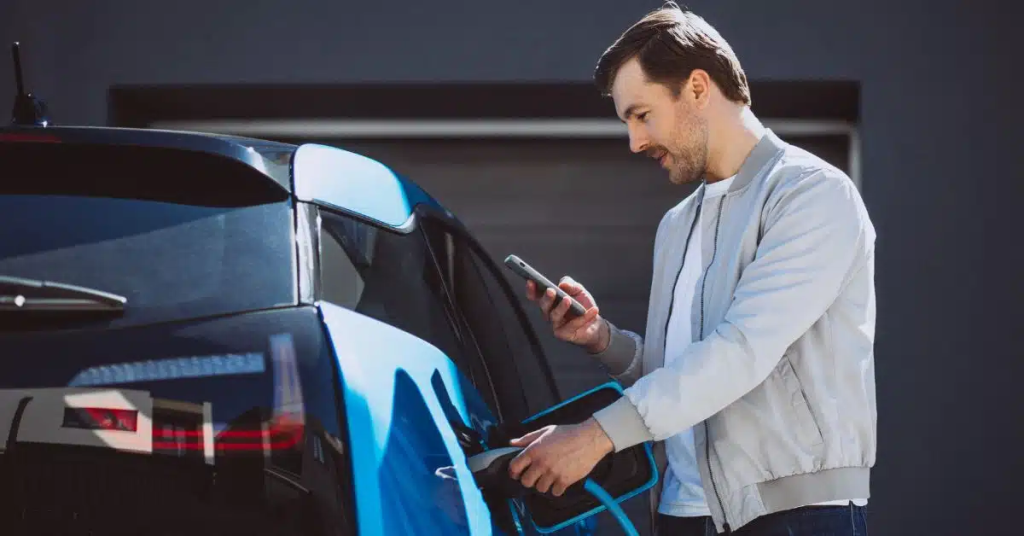
Products
Fast, Reliable, Everywhere

Solutions
Efficient, Innovative EV Charging Solutions.
News
We are committed to the innovation and application of EV charging.
The following are the factors that affect the charging speed of electric vehicles:

1. Battery capacity:
- The larger the battery capacity, the longer the charging time usually takes. Just like a large water tank needs more time to be filled with water, a high-capacity battery needs to receive more electricity, resulting in an extended charging time.
- For example, an electric vehicle equipped with an 80kWh battery will have a significantly longer charging time compared to a vehicle with a 40kWh battery under the same charging conditions.
2. Battery technology:
- Different battery technologies have a significant impact on charging speed. Currently, lithium-ion batteries are the most commonly used battery type in electric vehicles, but different chemical compositions and structures of lithium-ion batteries can lead to differences in charging performance.
- For example, Li Auto Mega adopts the advanced 5C CATL Kirin battery technologies which support high charging power up to 520KW/H , enabling faster charging speeds the battery can be charged from 10% to 80% within 10 minutes.
3. Vehicle charging system design:
- The vehicle's charging system includes components such as charging interfaces, cables, and chargers. Its design and performance directly affect the charging speed. for example some low speed electric cars, only with ac charging inlet, the charging speed is far slower than those cars with DC Fast Charging inlets.
1. Charging Station power:
- The power of the charging pile is one of the key factors determining charging speed. High-power charging piles can provide greater current and voltage, enabling electric vehicles to charge faster.
- For example, The latest Ultra fast charging station with a 500A liquid cooled charging cable which have higher power up to 500KW and can charge electric vehicles in a short time. In contrast, a DC charging piles
with High-Power EV Chargers have lower power and a relatively slower charging speed.
2. Charging pile type:
- Currently, there are mainly two types of charging piles on the market: AC charger (Portable EV Charger & wallbox) and DC charging piles. DC charging piles usually have a faster charging speed than AC charging piles.
- DC charging piles can directly deliver high-voltage direct current to the battery of an electric vehicle, while AC charging piles need to convert alternating current into direct current through an on-board charger.
3. Usage status of charging piles:
- If a charging pile is simultaneously charging multiple electric vehicles or if the charging pile itself has faults or degraded performance, the charging speed may be affected.
- For example, during peak hours, when multiple users use one charging pile simultaneously, the output power of the charging pile may be distributed, resulting in a reduced charging speed for each vehicle.

1. Temperature:
- Temperature has a significant impact on the battery performance and charging speed of electric vehicles. In extremely cold weather, the activity of the battery will decrease, and the charging speed will slow down.
- Conversely, in high-temperature environments, the battery may need to be cooled to prevent overheating, which can also affect the charging speed. For example, in winter, the charging time of electric vehicles may be 20% to 30% longer than in summer.
2. Grid stability:
- A stable power grid supply is crucial for ensuring fast charging of electric vehicles. If there are large fluctuations in grid voltage or insufficient power supply, the charging speed may be affected.
- In some areas, due to weak grid infrastructure or excessive demand during peak electricity consumption periods, the output power of charging piles may decrease, thereby extending the charging time.
Pilotenergystorage Co.,ltd as a leading manufacturer in ev chargers, we offer AC chargers and DC Fast Charging stations in different power and connector interface to meet different charging scenarios.
